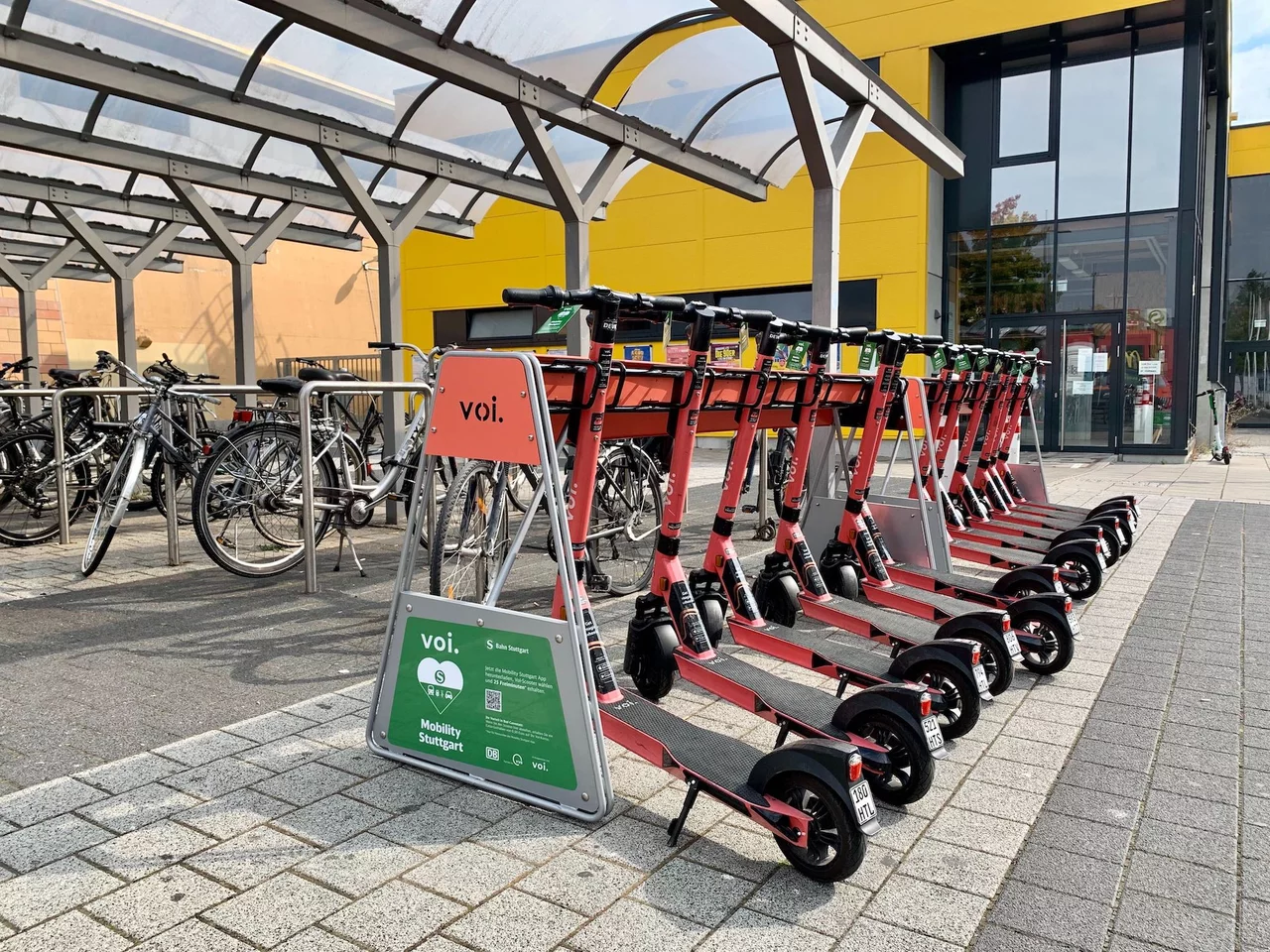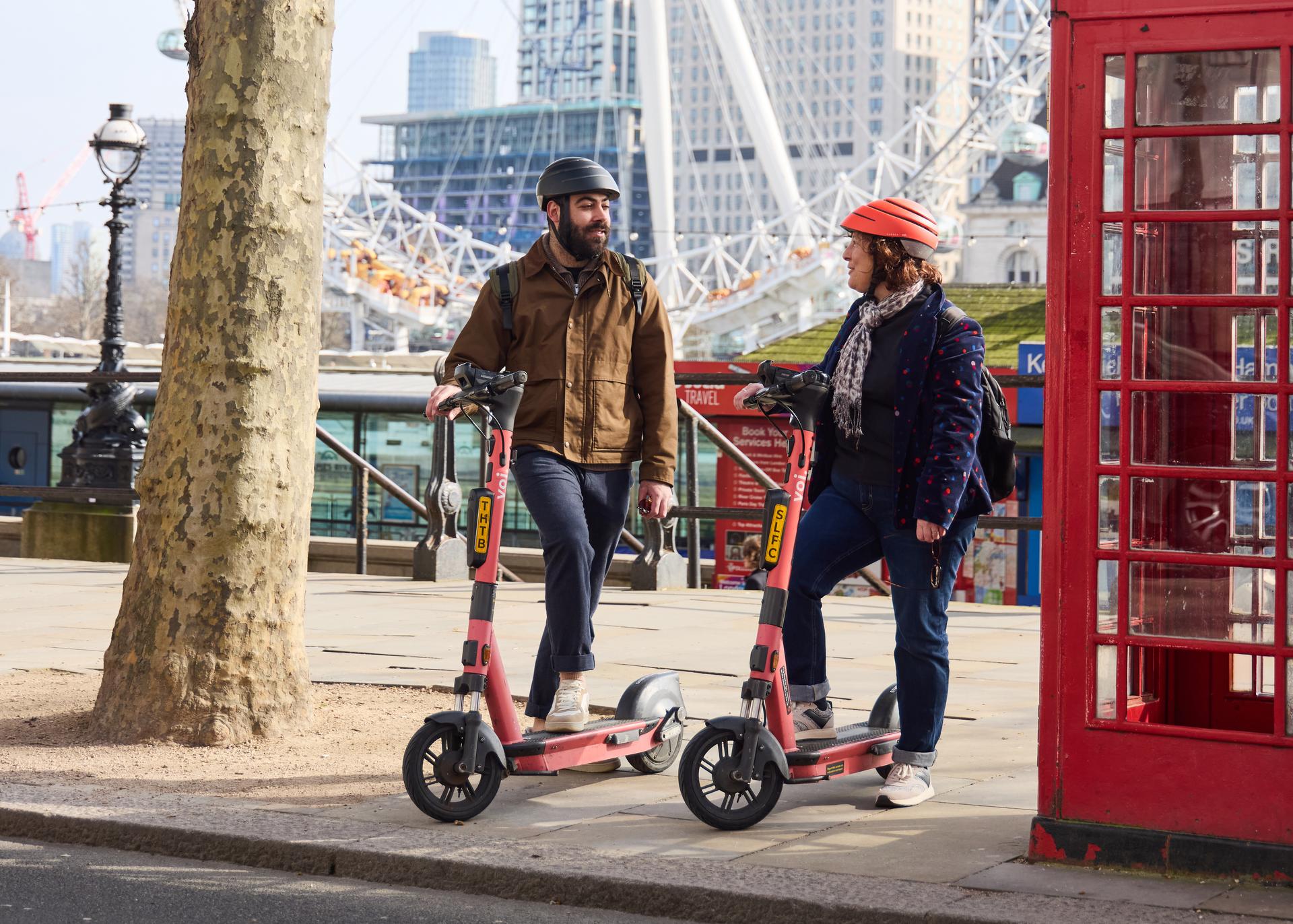Study: E-scooters can help increase public transport ridership

A pilot initiative in Stuttgart showed that synergies between shared e-scooters and public transport led to a 35 % increase in public transport ridership. The initiative also found that physical parking infrastructure at the train station can reduce clutter with e-scooters.
Shared e-scooters are often said to contribute to filling the first/last-mile gap that can make public transport less convenient than car trips. This means that e-scooters are not only an alternative to shorter car trips in city centres but also for longer car journeys when combined with public transport.
To date, there’s limited research about the positive contribution that shared micro-mobility services can have on public transport. However, a joint pilot project between Voi, Stuttgart’s rail operator S-Bahn Stuttgart, and the mobility-as-a-service platform Mobimeo, provides insights into how these synergies can be achieved to shape an industry-leading framework.
“Multilevel integration between different transport service operators can significantly benefit mobility in modern cities and contribute towards the mobility-as-a-service vision,” says Constantinos Antoniou, a professor at the Technical University of Munich, who wrote a white paper about the pilot project.
Multilevel integration means three levels of integration: physical, digital and commercial. This can include integrating services between digital platforms and offering vouchers to combine different travel modes. In addition to these kinds of measures, the Stuttgart study showed that e-scooter parking infrastructure at the public transport stations proved vital to improving the synergies.
“The impact of the effect of infrastructure is super important, as shown by the study. By integrating parking racks close to the station, we have been able to funnel the demand between shared micro-mobility and public transport,” says Jasmin Rimmele, who works with public transport partnerships at Voi.
Professor Constantinos Antoniou found that the multilevel integration carried out in Stuttgart, with parking racks at the Bad Cannstatt train station, led to significant synergies between the two transport modes.
The partnership between Voi and S-Bahn Stuttgart led to a 35 % increase in rail tickets purchased by Voi users terminating at the Bad Cannstatt station, compared to the rest of the city of Stuttgart. Moreover, the number of last-mile Voi trips increased by more than 250% in the Bad Cannstatt station after parking racks were installed.
“Besides the direct effect on the number of trips, the intervention of adding parking stations also had a distinct effect on the parking characteristics, resulting in much more organised parking patterns.”
The pilot initiative provides valuable insights into how multilevel integration can increase modal shift from cars. Interestingly, the integration of physical parking infrastructure at the train station also significantly impacted how e-scooter riders parked at the end of the trip.
“Besides the direct effect on the number of trips, the intervention of adding parking stations also had a distinct effect on the parking characteristics, resulting in much more organised parking patterns”, says Constantinos Antoniou. “Overall, these findings suggest that local public transport accessibility improved with the Voi initiatives.”
The pilot initiative and research provides valuable insights into how mobility-as-a-service can help to reverse car dependency in cities. Professor Constantinos Antoniou says that researchers, operators and policy-makers must collaborate to enhance the potential impact of shared e-scooters.
“The success of this project demonstrates the ‘cultural’ agreement between the project partners and is a very promising step in the direction of tighter, mutually beneficial integration between micro-mobility and public transport,” says Constantinos Antoniou.


